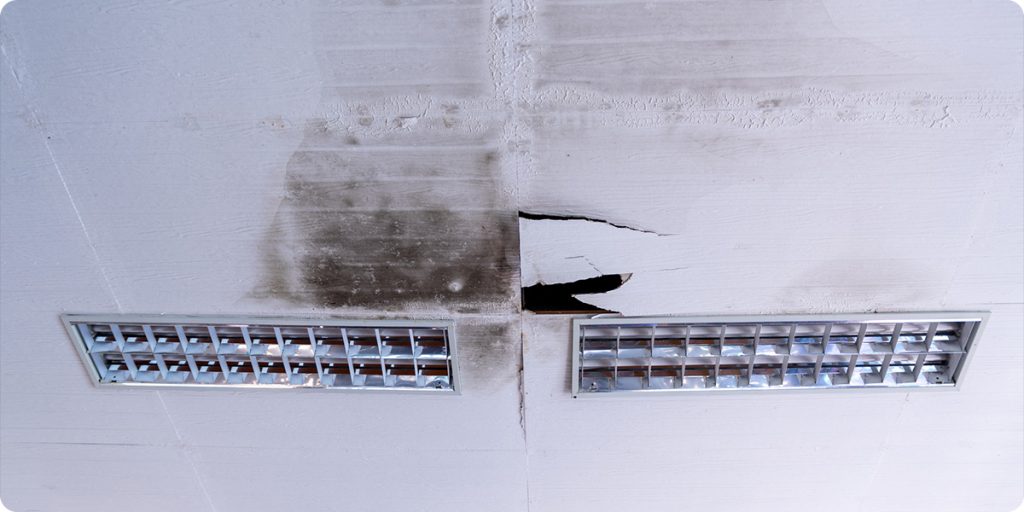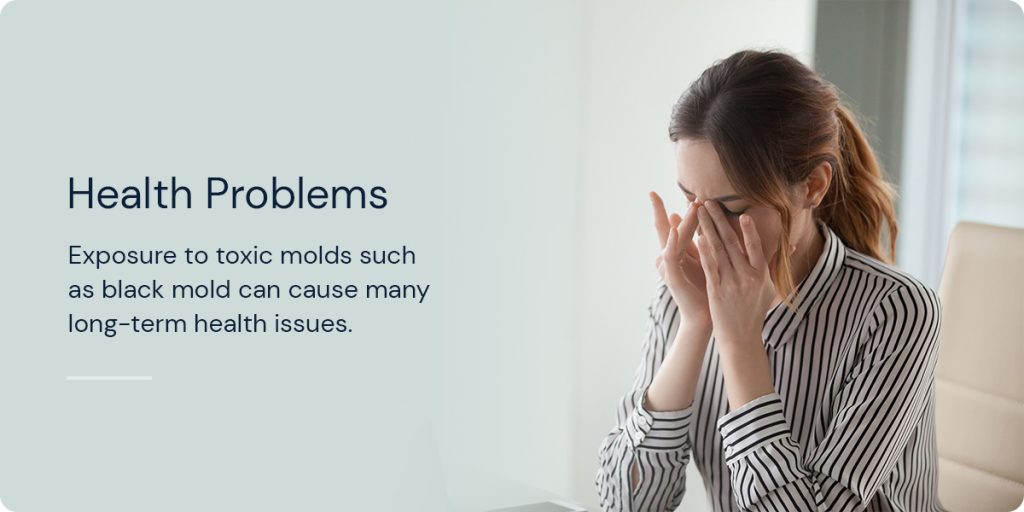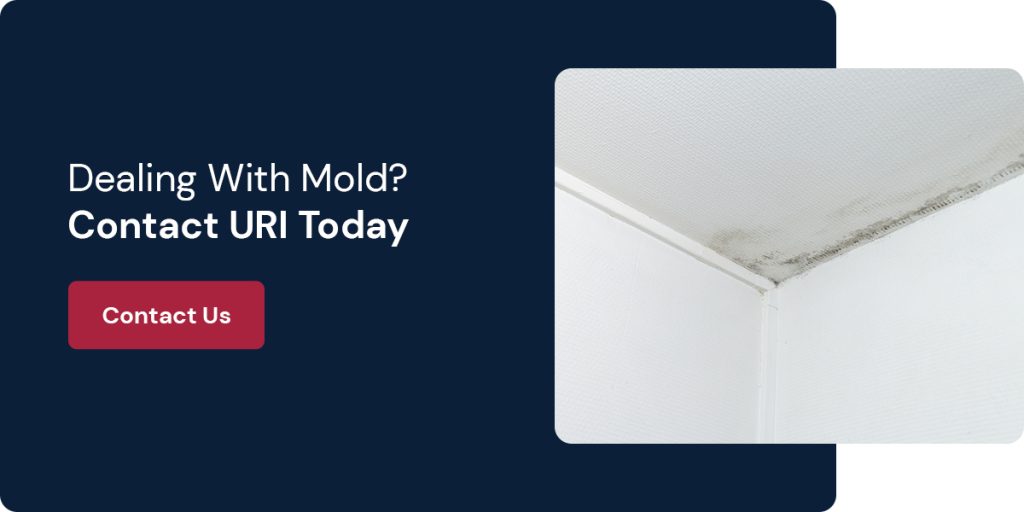
Both mold and mildew are fungi commonly found in moist environments — both present potential danger to the occupants of a building. If left unattended in an area with uncontrolled moisture, harmful microorganisms can damage a large portion of your property. But which is worse, mold or mildew?
Although they share several commonalities and are easily confused with one another, mold and mildew are not the same. Mildew is a subclass of mold — it’s early-stage mold. Understanding the difference between mold and mildew and identifying each allows you to take the first steps toward eradicating it from your building.
How do you know whether it’s mold or mildew? The first step is to be aware of the differences in texture and appearance:
The mold versus mildew smell test is often inconclusive as they smell very similar. Both have an earthy, musty smell that’s hard to miss. The good news is if you’ve noticed an aroma similar to what we’ve described in one of your buildings, you know what the cause might be.
Both mildew and mold thrive in moist environments, especially places with previous water damage. These fungi thrive anywhere damp, such as moist surfaces, ceilings, floors and walls, or wet and humid areas, like basements. If a building has leaks or water damage occurs, the spores will move in and start growing.
Mold and mildew can cause damage to various structures, but there are some differences in the depth of the damage caused by these two different fungi.
Mold buries deep inside structures, slowly rotting and impacting their integrity. If left unchecked for an extended period, mold can cause structural damage that requires a lot to repair. Mildew spreads outwards and remains flat on surfaces, making it less damaging and easier to remove. As it doesn’t permeate the structures, mildew causes less long-term damage to buildings.

Now, here’s the big question. Are mold and mildew dangerous? The answer is yes, though one has much more severe implications. Mildew presents some health concerns. If inhaled, it can cause headaches, coughing or breathing trouble. The effects of breathing in mildew spores are short-term and can be likened to an allergic reaction.
The effects of mold are much more severe. Exposure to toxic molds such as black mold can cause many long-term health issues, from allergic reactions to asthma and other respiratory problems, migraines, fatigue and even depression.
It’s wise not to underplay the potential health risks associated with mold and mildew. In commercial settings, the number of people using a building is much higher, and a mold problem potentially puts those people at risk.
The good news is there’s a simple method for testing to see whether you may have a mildew or mold problem. All you need is some bleach. Drop a couple of spots of bleach on the area in question and wait about five minutes. If the fungus gets lighter, you have mildew. You’ve got mold on your hands if it stays dark in color.
If you suspect you’re dealing with mold in your building, contact a professional for further testing. Once the professionals know what’s happening, they can guide you through the necessary steps for safe removal.
You can deal with mildew using standard household cleaning products. All you need is a cleaning product like undiluted vinegar or antibacterial dish soap and a scrubbing brush. Try to clean mildew in a well-ventilated area and use rubber gloves and a face mask to protect yourself from spores.
You may require professional help when it comes to mold removal because of how it bores into the structures it grows on. Mold removal procedures differ depending on the type of mold, so you need a professional to determine what type you have in your building. The cleaning process can also be dangerous and require specialized products. The ideal outcome is to ensure all mold traces have been removed from your property. For that, professional mold remediation services are best.
Ideally, you want to prevent mold and mildew from growing in your buildings. There are some straightforward measures you can take to minimize the risk:
Keep things as clean as possible and make use of natural ventilation where you can. Keep doors and windows open if the weather’s dry so air can circulate through the building and dry out moist areas.
Mildew can usually be removed without professional assistance, depending on the size of the building and the scope of the problem. Remember, mildew is flat and only grows on surfaces. If you’ve done the bleach test and the fungi became lighter in color, it’s safe to proceed on your own.
When it comes to mold removal, contacting a professional service gives you so much peace of mind. Dealing with mold in your building is not something you should work through on your own. Ensure an expert has effectively removed all traces rather than take a chance and leave some behind yourself.
If you think you may be dealing with a mold problem, chances are, you’d like to get on top of it as soon as possible. Acting fast is a must to avoid structural damage and health risks multiplying. Start the process of mold remediation and containment today with Unlimited Restoration.
At URI, we can assess your building and provide you with feedback before moving to the containment and restoration phase of the process. With URI, you can rest assured that we’re on it. Contact us for access to one of the business’s most established mold remediation specialists.
